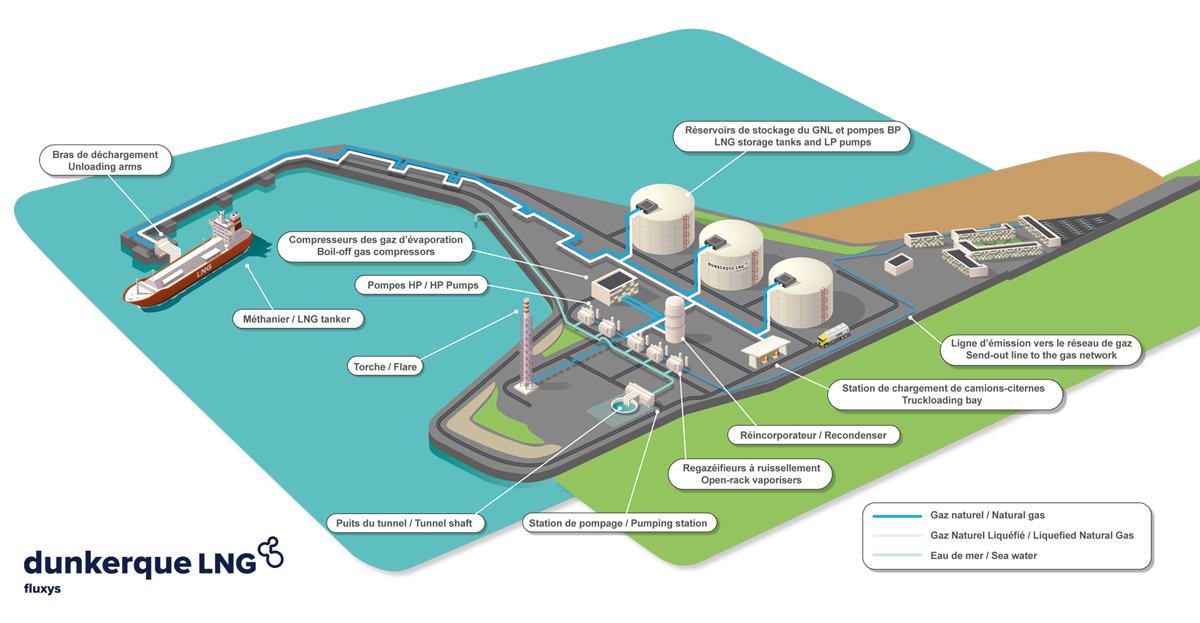Dunkerque LNG Infrastructure
Operator
Gaz-Opale, a subsidiary owned 51% by Dunkerque LNG and 49% by the Belgian group Fluxys, is the terminal operator. It brings all its expertise in safety and operations to the Dunkirk terminal. Dunkerque LNG is the legal operator of the facility.

Facilities and installations
Occupying a 56 ha site alongside Dunkirk's Western Harbour, the Dunkerque LNG terminal offers:
- a jetty ready to accommodate vessels from 5,000 m³ to the world's largest Qmax LNG carriers (265,000 m³) and able to unload at a maximum flow rate of 14,000 m3 per hour and 8,800 m3 per hour for reloading ;
- 3 storage tanks, each capable of storing 200,000 m3 of LNG at -162°C;
-
10 Open Rack Vaporizers (ORVs) or regasifiers, which heat the LNG and convert it into natural gas before sending it to the distribution network; supplied with warm water from the Gravelines nuclear power plant via a 5 km long underwater tunnel. This industrial synergy saves 436,000 tons of CO2 per year and makes us the only LNG terminal in the world with zero CO2 emissions.
Advantages
The Dunkerque LNG terminal offers its customers major advantages:
- one of the largest storage capacities in Europe;
- diversification and security of supply for the French and European markets;
- a new maritime gateway for LNG arrivals in France;
- a location in the heart of Europe, at the crossroads of maritime routes between the English Channel and the North Sea and close to natural gas consumer markets in France and Northwestern Europe;
- a location in the heart of Europe, at the crossroads of shipping routes between the English Channel and the North Sea and close to natural gas consumption markets in France and northwestern Europe;
- a direct connection to two European markets: France and Belgium;
- a deep-water port that makes it accessible all year round;
- real upstream flexibility to accommodate all sizes of vessels, from 5,000 m³ to 265,000 m³;
- downstream flexibility with on-demand delivery to the network.
